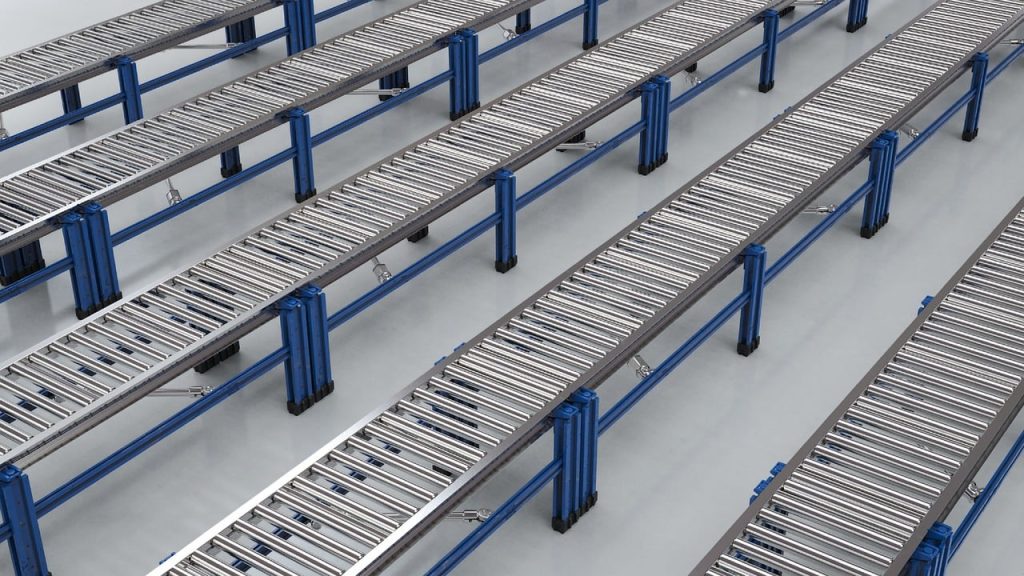In the world of modern manufacturing, efficiency and speed are the cornerstones of success. One of the most crucial components in achieving this is the conveyor system. Conveyors and conveying systems are integral to industrial production, transforming how materials are transported, processed, and handled. These systems not only streamline operations but also significantly reduce manual labour, increase productivity, and ensure the consistency of production processes.
The Evolution of Conveyor Systems
The concept of the conveyor system dates back to ancient times when simple machines were used to move heavy objects. However, it wasn’t until the late 19th and early 20th centuries that conveyors as we know them today began to take shape. With the arrival of the Industrial Revolution, the need for more efficient ways to move materials within factories became apparent.
The real revolution in conveyor systems came with the use of electricity and advanced motor technology. By the mid-20th century, conveyor systems had become more sophisticated, incorporating automated controls and a variety of materials, such as metal and synthetic fibres, for belts. These advancements paved the way for the modern conveying systems that are now indispensable in industries.
There are several types of conveyor systems, each designed to meet specific industrial needs.
Some of the most common include:
- Belt Conveyors: These are the most prevalent type of conveyor system. They consist of a continuous belt made of materials like rubber, polyester, or nylon, which is powered by electric motors. Belt conveyors are ideal for moving bulk materials and are widely used in industries such as mining, agriculture, and logistics.
- Roller Conveyors: These systems use a series of rollers, either powered or gravity-driven, to move items. Roller conveyors are particularly useful for handling heavy loads and are commonly found in warehouses and distribution centres.
- Chain Conveyors: Utilising chains to move products along a production line, these conveyors are robust and can handle heavy or bulky items. They are often used in automotive manufacturing and other heavy industries.
- Pneumatic Conveyors: These systems use air pressure to move materials through enclosed tubes. Pneumatic conveyors are ideal for transporting fine materials such as powders and granules and are frequently used in the pharmaceutical and food industries.
- Bucket Elevators: Designed for vertical transport, bucket elevators consist of a series of buckets attached to a belt or chain. They are used to lift bulk materials, such as grains or ores, to higher levels in a processing facility.
Benefits of Conveyor Systems
The implementation of conveyor systems offers numerous benefits that contribute to the efficiency and success of industrial operations:
- Increased Efficiency: Conveyor systems drastically reduce the time and effort required to move materials within a facility. This leads to faster production cycles and the ability to meet higher demand.
- Reduced Labour Costs: By automating the transport of materials, conveyor systems minimise the need for manual labour. This not only cuts labour costs but also reduces the risk of workplace injuries associated with lifting and moving heavy items.
- Consistency and Reliability: Conveyor systems provide a consistent and reliable method of moving materials, ensuring that production processes run smoothly and without interruption. This consistency is crucial for maintaining product quality and meeting production deadlines.
- Scalability: Conveyor systems can be easily scaled to match the needs of a growing business. Additional modules and sections can be added to accommodate increased production capacity.
- Flexibility: Modern conveyor systems are highly customisable and can be tailored to meet the specific requirements of different industries. This flexibility allows businesses to optimise their production processes and adapt to changing needs.
Summing up, conveyors and conveying systems have revolutionised industrial production, making it faster, easier, and more efficient. By automating the transport of materials, these systems have significantly reduced manual labour, increased productivity, and ensured the consistency of production processes.
Written by Astrid Hunt, Business Staff Writer


